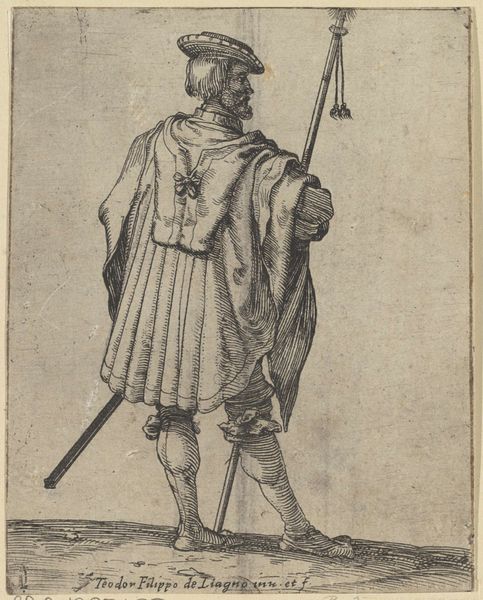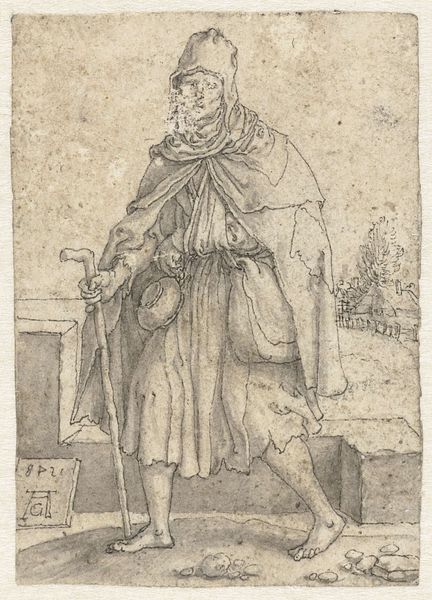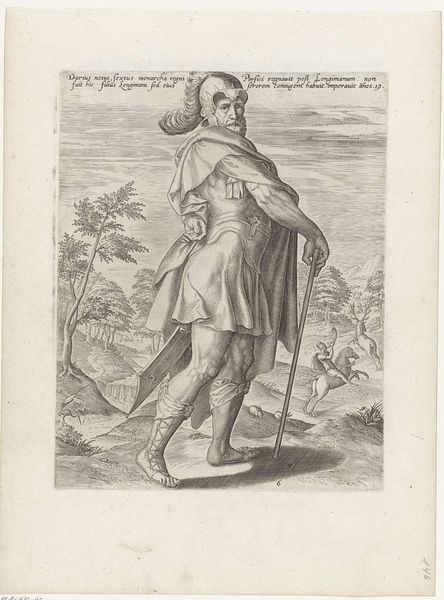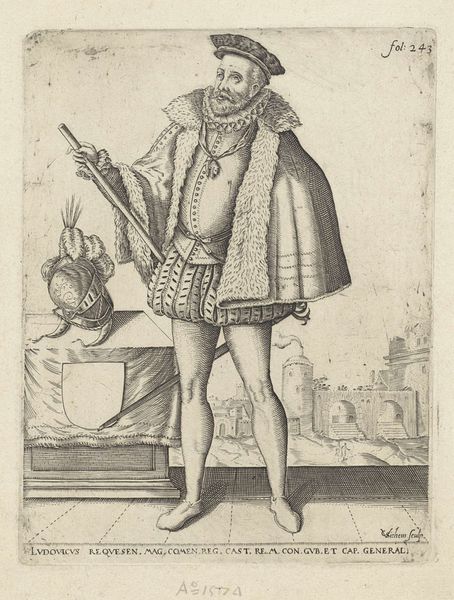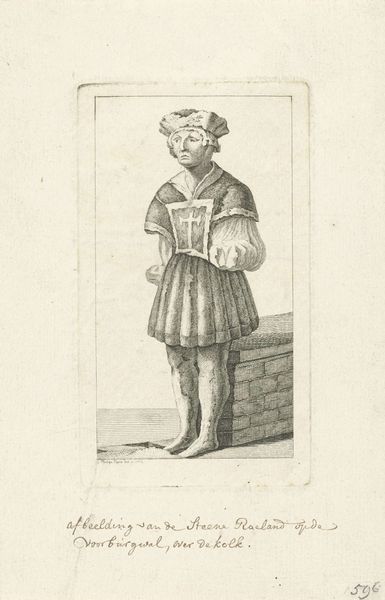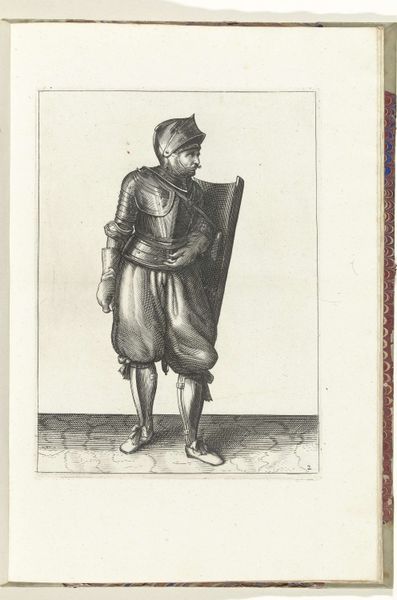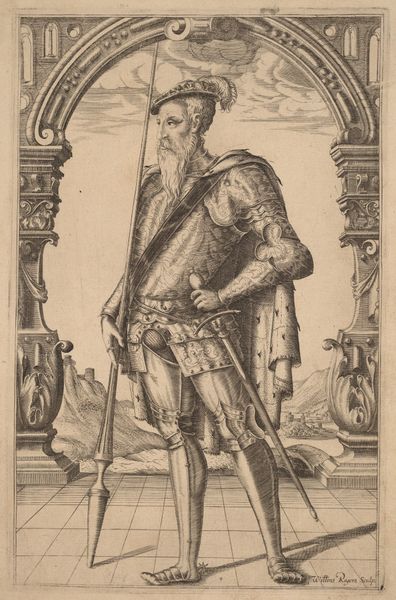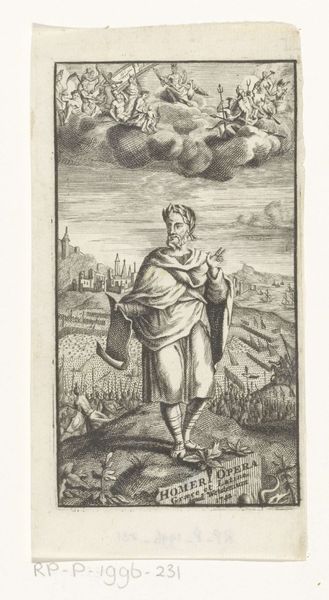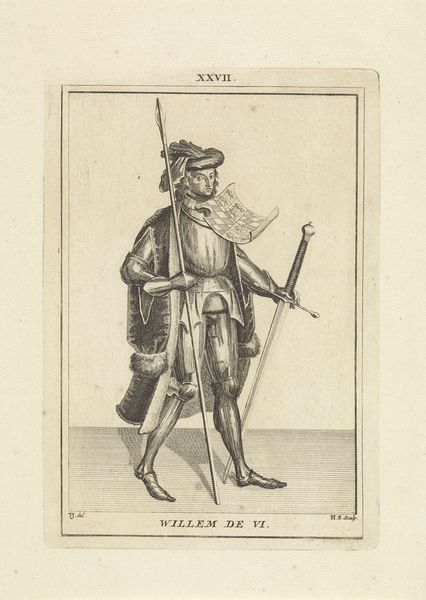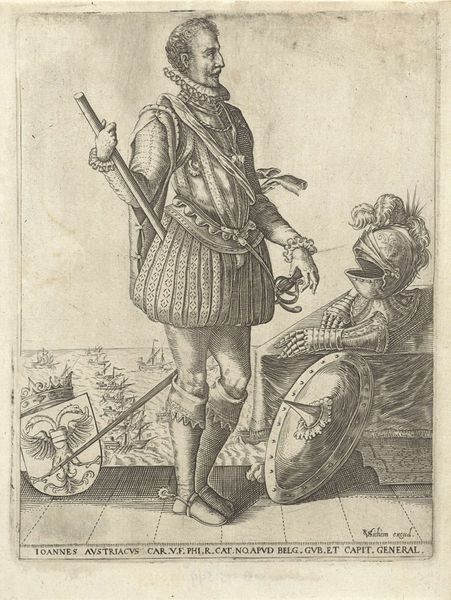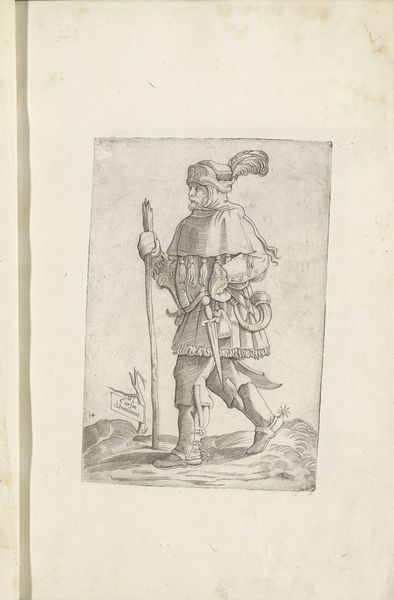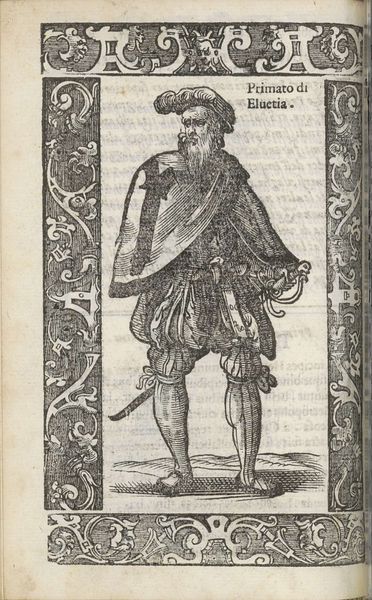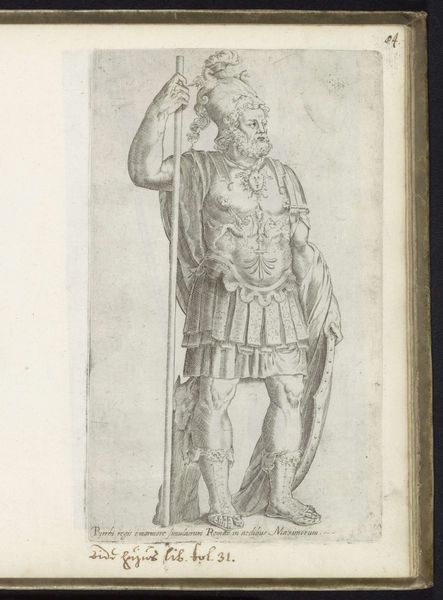
print, paper, engraving
portrait
aged paper
toned paper
light pencil work
quirky sketch
pencil sketch
sketch book
mannerism
figuration
paper
personal sketchbook
pen-ink sketch
sketchbook drawing
history-painting
sketchbook art
engraving
Dimensions: height 265 mm, width 195 mm, height 150 mm, width 105 mm
Copyright: Rijks Museum: Open Domain
Editor: Here we have "Man uit Italië," or "Man from Italy," a 1569 engraving on paper by Ferando Bertelli, housed in the Rijksmuseum. There's a captivating roughness to the piece; it feels almost like a sketch found tucked away in someone's personal sketchbook. What do you make of this work? Curator: Indeed, the apparent informality of this portrait print belies a complex social dance. Consider how printed images like this circulated in 16th-century Europe. They were often produced and disseminated as tools of power and influence, not merely as aesthetic objects. Bertelli presents this "Italian man," but who was the target audience, and what statement was Bertelli trying to make about Italian identity to them? Editor: That’s interesting. I hadn’t considered the political implications of just labeling him “Italian.” Was it a commentary or just a neutral observation? Curator: It's worth exploring the role that Italy, and perceptions of Italian culture, played in the artistic and political landscape of Northern Europe at that time. Was it seen as exotic, threatening, a desirable trade partner, or something else entirely? What details, like his clothing and bearing, contribute to a specific interpretation of "Italianness?" Editor: So, it's less about the individual portrayed and more about the statement made about a whole culture by one artist. I guess the engraving itself would have given the piece a further reach than, say, a painted portrait of the time. Curator: Precisely. And think about the choice of engraving; was it meant to be widely reproduced? The proliferation of imagery was closely tied to the Reformation and religious/political conflicts. These images weren't just art; they were active participants in shaping public opinion and establishing or undermining authority. Editor: That provides a lot to consider. Thanks, that helps me see the piece and prints from that period in a new light. Curator: My pleasure. It's through such investigations that we unlock a fuller appreciation for the complex role art has played in history.
Comments
No comments
Be the first to comment and join the conversation on the ultimate creative platform.

